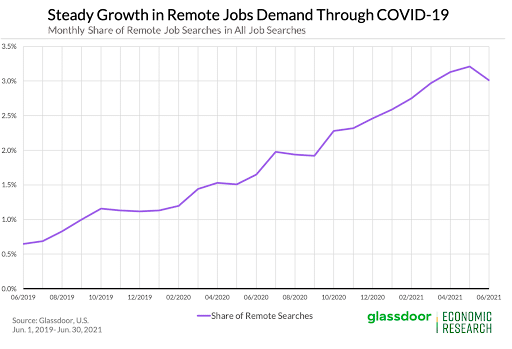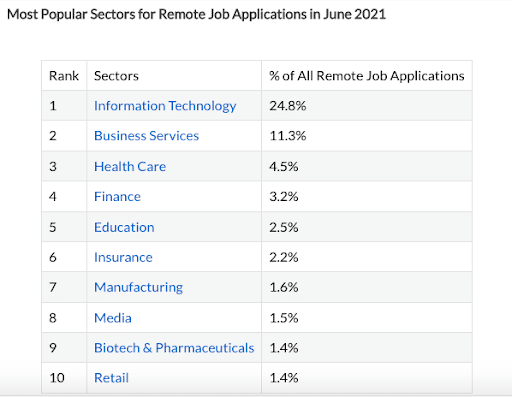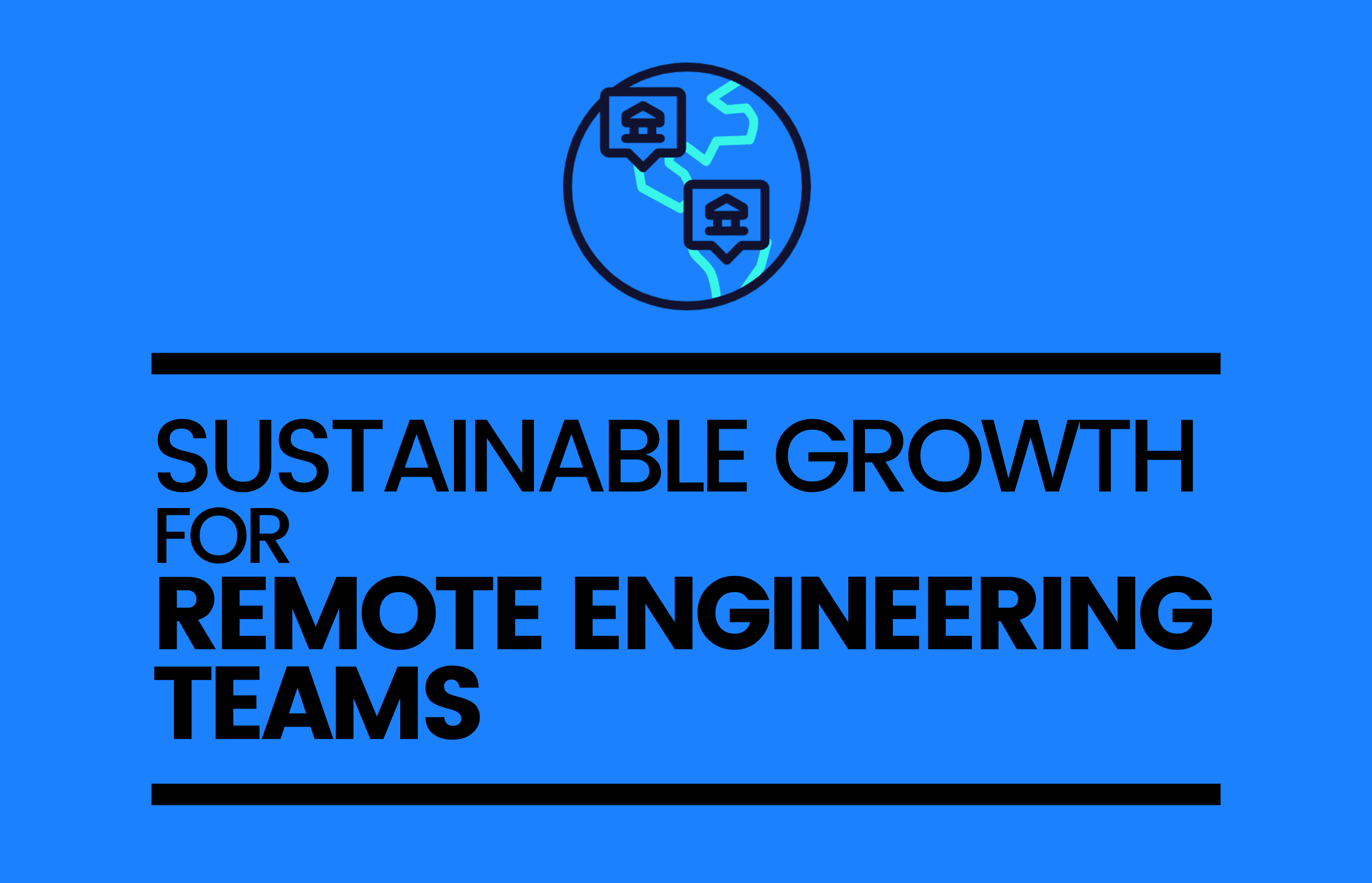Demand for remote work is at an all-time high. Glassdoor reports that remote job searches in the U.S. grew by a staggering 460% between June 2019 and June 2021.

With 24.8% of all applications, the IT industry was the most popular sector for remote job seekers in June 2021.

But what if you’re thinking of hiring a dedicated development team yourself but are concerned that remote work may hurt employee performance?
You have nothing to worry about.
In 2020, around 42% of software engineers saw an increase in their productivity since the onset of work-from-home mandates, and nearly 60% reported that remote work had a net positive impact on developer productivity.
Here’s the thing, though. If you don’t know how to properly hire, onboard, and manage remote engineering teams from day one, you’ll likely set yourself up for failure as you scale up down the line.
What Are the Challenges of Managing Remote Employees in Tech?
Recruiting and managing highly skilled developers is always challenging. However, things can get even trickier when you’re looking to assemble remote-first teams. You have a lot to think about, including how to:
- Develop an effective remote onboarding process
- Maintain clear and efficient communication at all times, especially if employees are scattered across different time zones or when managing cross-cultural remote teams
- Oversee the software development process without micromanaging your remote engineers to death
- Gather and take into account everyone’s input when making important decisions
The good news is that there are measures you can take to ensure a positive employee experience, boost team productivity, and maximize ROI as you scale.
3 Tips for Sustainable Growth When Managing Remote Engineering Teams
Remote team management may be challenging, but it isn’t rocket science. These proven best practices for distributed teams can help set you up for success.
1. When Hiring, Don’t Settle for Good Candidates — Always Seek Out the Best
At Zartis, we’ve been recruiting remote engineering teams for a long time. We know full well the drudgery of sourcing, interviewing, and recruiting tech talent. It’s no wonder that most employers want to get it over with as quickly as possible and move on with their lives. However, that’s not a strategy we’d recommend.
When recruiting remote engineers, you should take the time to find the best people for the job. That entails exploring a large hiring pool and looking for candidates who are a good technical and cultural fit. Unless a potential remote employee ticks all the boxes, don’t hire them.
Remember, it’s easy to say no to subpar candidates, but it can be very hard to reject highly qualified people who are almost there — but not quite. Yet, this is the only way to ensure that your future team will meet all your technical and cultural requirements. It may take you slightly longer to find the right people, but you’ll reap the benefits in the long term.
To maximize your chances of finding the best remote engineers for your needs, you should also explore different hiring strategies.
One option is to recruit directly in various locations. This way, you can get rid of the intermediary — but keep in mind that there may be considerable costs and red tape involved.
Alternatively, you can partner with a third-party vendor like Zartis and have us set up a team extension for you. We take care of everything. All you need to do is interview and handpick the best remote engineers for your needs from our shortlist.
To learn more, explore our team augmentation services.
2. Put a Lot of Effort into Your Onboarding Process
The secret to setting up an effective team in a remote environment is quality onboarding. If you create a sense of belonging and provide new hires with the information and tools they need to perform at their best from the outset, you’ll see a big spike in remote team productivity.
If you want to take a deeper dive into the topic, check out our post on the 3 Ways Onboarding Software Engineers Poorly Is Costing You.
3. Know How to Manage a Remote Development Team Properly
Just because remote work may be the new normal doesn’t mean it can’t be daunting. In the absence of a traditional office setting and casual banter around the proverbial water cooler, remote engineers may end up feeling isolated and unappreciated.
To keep your developers happy, prioritize communication, feedback, and engagement. To that end, make sure that:
- Any announcements, updates, and other important information are communicated to everyone using the appropriate channels
- You include or explain the decision-making process to all team members
- Remote employees can easily find the people and information they need
- There is a dedicated time and space for team members to socialize in real time using video conferencing solutions or other communication channels
- You encourage a company culture of diversity and inclusion, enable collaborative environments, and lead by example
For more ways to keep your remote engineering teams happy, click here.
Bonus Tip: To Find Out What Developers Like in a Remote Manager, Go Straight to the Source

Your approach to hiring, onboarding, and management — and the values you promote — can make or break the long-term success of your virtual teams.
To learn what developers consider good (and bad) management practices, download our eBook, The Developer Diaries. In it, we share the insights we’ve collected from our many years of experience in remote hiring and management. This is the definitive guide to keeping your remote-first teams happy, productive, and engaged.
Set Up High-Performing Remote Engineering Teams with Zartis
Are you looking to assemble a dedicated development team but don’t have the time, don’t know where to begin, or simply want to minimize the hassle and red tape?
You’ve come to the right place. Just tell us about your needs and business goals, and we’ll sift our international hiring pool to find the best remote engineers for your company.


